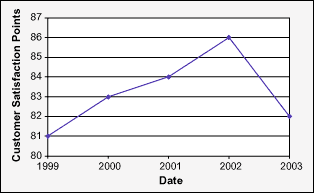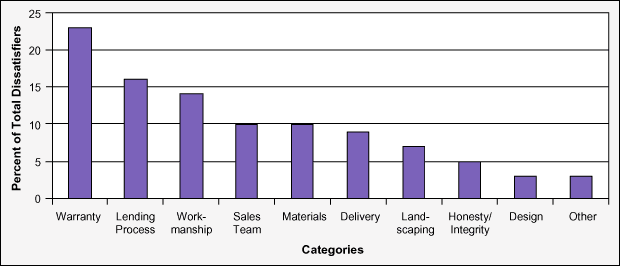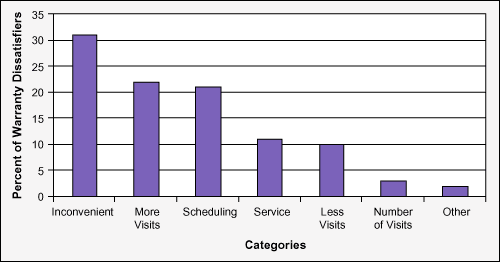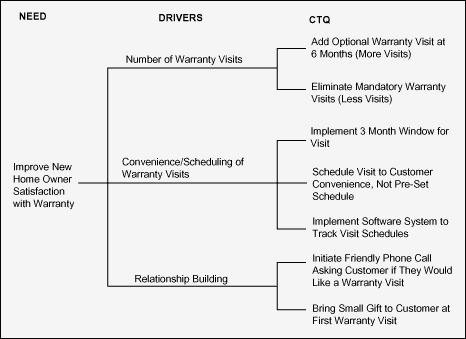
Most people would agree that customers are the most important part of a business – no customers, no business. In order to be successful, a business must know who its customers are and what the expectations of those customers are for the product or service the business sells. In Six Sigma, that process is known as identifying the voice of the customer (VOC). The key to having success in that process is gathering customer data and converting it into measurable critical-to-satisfaction elements.
Some customer data is readily available to a business from sources such as customer complaints, warranty claims, customer returns, refunds, etc. Additional customer data may be obtained from surveys, focus groups, face-to-face interviews and feedback cards.
- Customer surveys are used to elicit quality, service and performance data by asking a standardized set of questions. They are either mailed to customers for them to complete and return or are administered by an interviewer.
- Focus groups are small groups of customers invited to a meeting and asking for their thoughts and opinions on specific questions.
- Face-to-face interviews are conducted by an interviewer with individual customers or potential customers who are asked about their experience with specific products or services.
- Feedback cards are a common method of measuring customer satisfaction and are used by many restaurant and hotel chains to rate elements such as quality, cleanliness, and service.
Gathering customer data is the first step in creating useful information for the business. Once obtained, customer data is analyzed to uncover customer perceptions and satisfaction trends over time. There are multiple tools available to analyze this data and determine whether customer satisfaction is trending positive or negative. A few of the most common tools are:
- Simple line graphs are used to show whether a specific characteristic is changing over time, getting better or worse, or staying the same.
- Control charts are used to show whether performance is changing over time and to detect special and assignable causes of variation.
- Pareto analysis is used to identify the top reasons for customer dissatisfaction. With this information, businesses know which problems to address first to get the most improvement most quickly. Also Pareto charts can show whether defect/reject categories are being driven down over time.
- Statistical tests and comparative analysis are used to determine whether or not customer attitudes or specific performance measures have changed and if so, whether or not the changes are statistically significant.
Once the customer data is analyzed and customer concerns are identified, the information is translated into critical-to-satisfaction requirements for the business. A critical-to-quality (CTQ) tree can help convert customer needs and wants into measurable requirements for products and/or services.

A Case Study: Data into Satisfaction Data
The following case study illustrates how a fictitious homebuilding business used customer satisfaction survey data to develop meaningful and measurable critical-to-satisfaction data.
In this example, the business used customer satisfaction surveys to measure performance for the last several years. A line chart showed steadily improving customer satisfaction culminating in a high of 86 points in 2002. But then the annual score plummeted to 82 points in 2003. (Figure 1)
Concerned about this degradation, the business analyzed the survey data. A Pareto analysis revealed that the warranty category was 23 percent of the total customer dissatisfaction score and the largest item on the Pareto chart (Figure 2). While scores for warranty-related items were low (worst ratings), warranty was identified as most important to customers.

The warranty data was analyzed further and an additional Pareto chart (Figure 3) was completed to identify the warranty issue more specifically. When needed, customers were interviewed by phone to clarify the issue. The results showed that the primary causes of dissatisfaction with the warranty were the inconvenience and scheduling of mandatory warranty visits during specific time frames and the lack of an additional warranty visit that some competitors provided.

A critical-to-quality tree (Figure 4) was then developed to convert the customer needs/wants to measurable requirements for the business to implement.

By analyzing the customer survey data and developing the CTQ tree, the business was able to identify critical-to-satisfaction requirements. These requirements became the focus for improving customer satisfaction. The business eliminated the mandatory warranty visits and made all warranty visits optional. Eliminating the mandatory visits satisfied the customers who thought there were too many visits and adding an extra optional visit satisfied the customers who thought there were too few visits. Expanding the time frame for scheduling warranty visits from two weeks to three months eliminated the inconvenience for customers who had busy schedules and found the time frame too difficult.
The business took a general, difficult-to-measure need (to improve homeowner warranty satisfaction) and developed specific, measurable and actionable requirements to drive improvements in customer satisfaction.